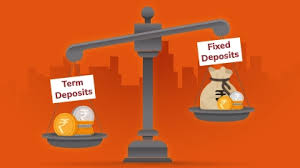When it comes to secure investments, fixed deposits (FDs) are a popular choice among Indians. Yet, many investors often overlook the crucial role interest rates play in determining their FD returns. Learning the impact of interest rates on your FD is essential to make informed investment decisions and maximize your earnings. In this article, we’ll explore how interest rates work and their effect on FD returns. We will also cover strategies to secure the best FD rates.
Understanding Interest Rates
Interest rates are the cost of borrowing money or the return on savings. They play a vital role in the economy, influencing spending, borrowing, and investment decisions. The Reserve Bank of India (RBI) adjusts interest rates to control inflation and maintain economic stability.
Factors affecting interest rates
Several factors influence fixed deposit interest rates, including:
-
Higher inflation leads to higher interest rates to control rising prices.
-
Strong economic growth may prompt interest rate hikes to prevent overheating.
-
Monetary and fiscal policies impact interest rates.
-
Global events and trends can influence domestic interest rates.
Impact on Fixed Deposit Returns
Below are several factors that can influence the returns on your fixed deposits (FDs):
Interest Rate Volatility and FDs
Fluctuations in interest rates directly affect FD returns. When interest rates rise, new FDs offer higher returns. Meanwhile, existing FDs continue to earn the originally agreed-upon rate until maturity. Conversely, when rates fall, new FDs yield lower returns.
Example: Suppose you invested ₹1 lakh in a 1-year FD at 6% interest. If rates rise to 7% after six months, your existing FD will continue to earn 6% until maturity. But, new FDs will offer a higher 7% rate.
Reinvestment Risk
When interest rates fall, the returns on your maturing FDs may be lower if you reinvest in a new FD. This is known as reinvestment risk.
Scenario: Your ₹1 lakh FD matures, and you reinvest the principal and interest (₹1,06,000) in a new 1-year FD. However, rates have fallen to 5.5%. Your new FD will earn ₹5,830 in interest, compared to the ₹6,000 you earned previously.
Strategies to Secure the Best FD Rates
The following strategies can help you maximize returns on your fixed deposit rates:
Compare FD Rates Across Banks
Different banks offer varying FD rates. Compare multiple bank FD interest rates to find the best deals. Consider factors like the bank’s reputation, service quality, and convenience.
Choose the Right Tenure
FD interest rates vary based on the investment tenure. Generally, longer tenures offer higher rates. However, consider your liquidity needs and investment goals when selecting a tenure.
Example:
Tenure Interest Rate
1 year 6.0%
2 years 6.5%
3 years 7.0%
Ladder your FDs
Laddering involves investing in multiple FDs with different maturities. This strategy allows you to benefit from higher rates on longer-term FDs while maintaining liquidity through shorter-term deposits.
Example FD Ladder:
FD Amount Tenure
FD 1 ₹50,000 1 year
FD 2 ₹50,000 2 years
FD 3 ₹50,000 3 years
Monitor Interest Rate Trends
Keep an eye on interest rate movements and economic indicators. If rates are expected to rise, consider shorter-term FDs to take advantage of higher rates later. But if rates are likely to fall, lock in higher rates with longer-term FDs.
Consider Airtel Finance for competitive FD Rates
Airtel Finance offers attractive fixed deposit interest rates, with the convenience of opening and managing online accounts. Their FD interest calculator helps you estimate your returns, and the loan against FD facility provides liquidity when needed.
Conclusion
Interest rates significantly impact your fixed deposit returns. Knowing how interest rates work and employing smart strategies can make informed decisions to secure the best fixed deposit rates. Compare rates across banks, choose the right tenure, ladder your FDs, and monitor interest rate trends. Consider the competitive rates and convenience offered by Airtel Finance fixed deposits to maximize your returns. Stay informed and proactive to navigate interest rate fluctuations and achieve your investment goals.
FAQs
1. How does the tenure of your FD affect its interest rate?
Generally, longer FD tenures offer higher interest rates compared to shorter tenures. This is because banks can utilize your funds for a longer period, allowing them to offer better returns.
2. What happens to FD when interest rates increase?
When interest rates rise, new FDs will offer higher rates. However, your existing FD will continue to earn the original rate until maturity. This is because the rate is fixed at the time of investment.
3. What affects fixed deposit interest rates?
Several factors influence FD interest rates, including inflation, economic growth, government policies, and global economic conditions. Banks adjust their rates based on these factors and the RBI’s monetary policy.
4. Is it advisable to break FD for a higher interest rate?
Breaking an FD prematurely to reinvest at a higher rate may not always be advisable. Consider the penalties for premature withdrawal and calculate the net benefit before making a decision.
5. How does the FD interest rate work?
FD interest rates are fixed at the time of investment and remain constant until maturity. The interest earned is calculated based on the principal amount, tenure, and the applicable interest rate.


 Get App
Get App  Airtel Store
Airtel Store  Login
Login 


